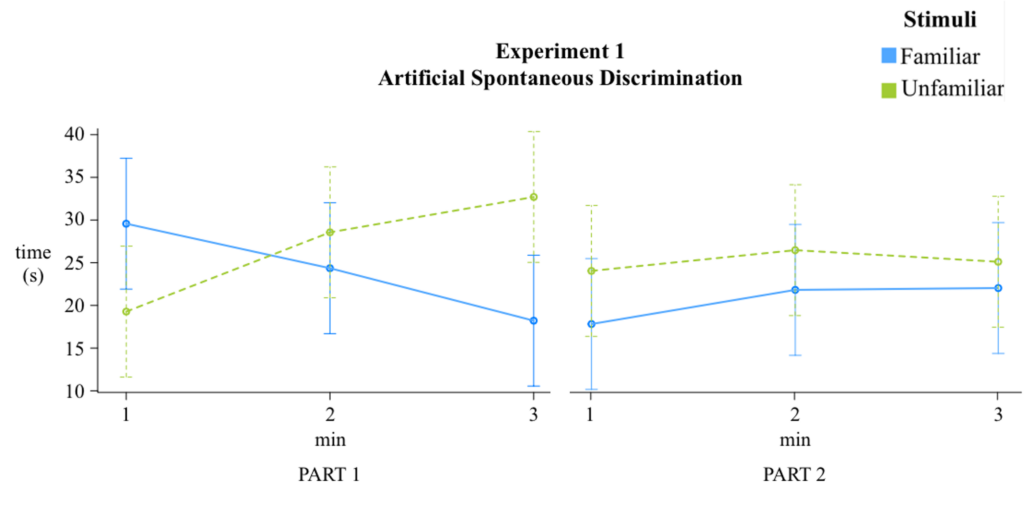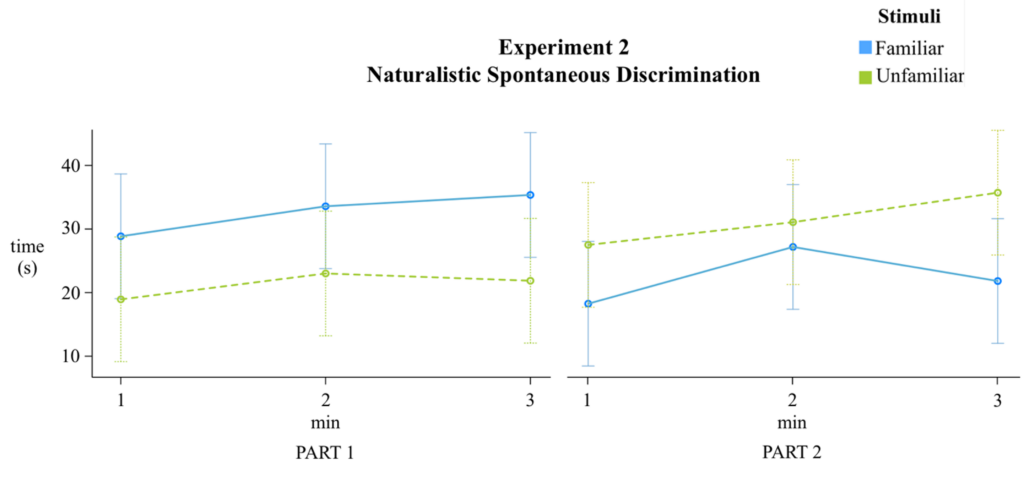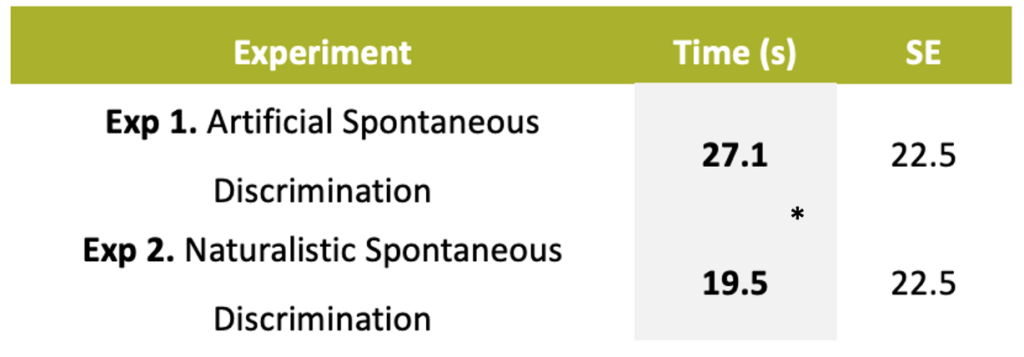The results for the spontaneous discrimination answer these two questions:
- Did chicks spend more time with the familiar or unfamiliar object?
- Which stimulus did chicks approach first?
Experiment 1 – Artificial Spontaneous Discrimination (ASD)
In the case of the experiment 1, there was no significant difference between the mean time chicks spent with the familiar or unfamiliar object. However, they approached first the familiar stimulus a significant higher amount of times (67.9 %)**.

Experiment 2 – Naturalistic Spontaneous Discrimination (NSD)
In the case of the Experiment 2 with the naturalistic stimuli, there was no significant difference in the average amount of time chicks spent with the familiar or unfamiliar object.
The same as it occurred for the previous experiment, chicks rejoined first the familiar stimulus 67.9 % of the times**

Moreover, when comparing the time spent by the chicks in the middle during the test depending on the type of experiment (ASD vs. NSD), there was a significant difference. The average amount of time spent by the chick in the middle was higher for the artificial stimuli, than the naturalistic one.

Experiment 3. Proto-arithmetic task: 3 vs. 4 discrimination
Chicks overall performance approaching the larger set was of a 49.5 % of correct response, close to chance level.
The analysis was also restricted to the first five trials and the last five trials, not showing any difference to the chicks’ performance for the 20 trials.
